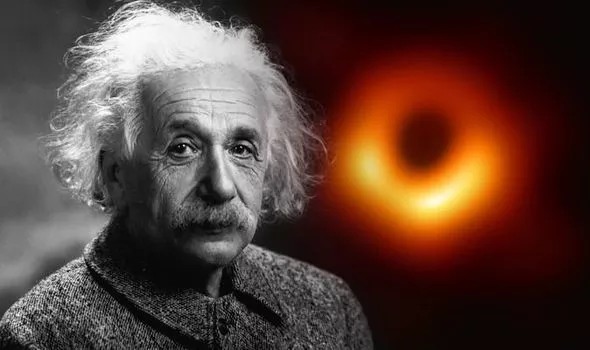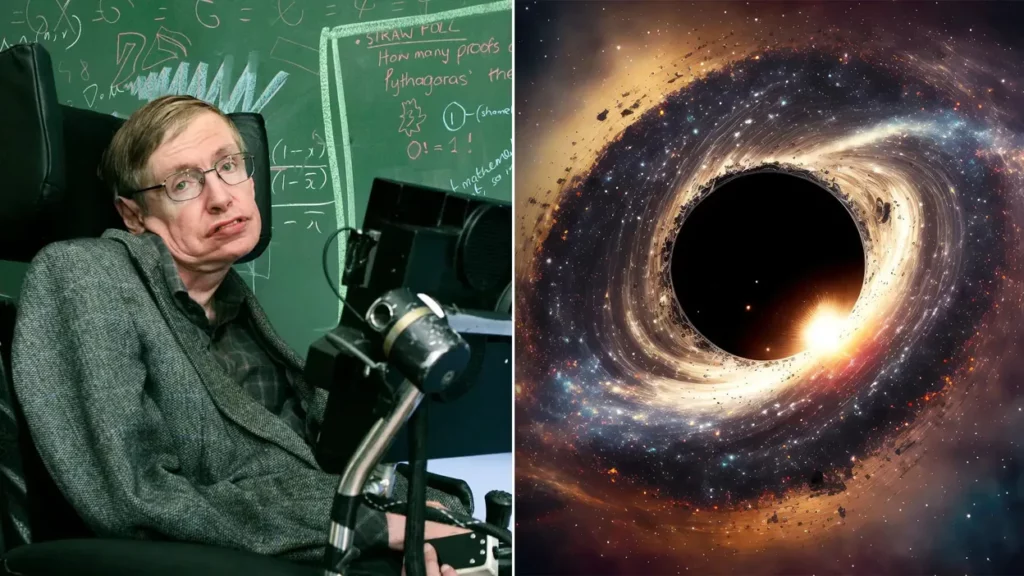In this article, we delve into the mysterious realm of black holes, exploring their history, anatomy, and the ground-breaking work of prominent scientists like Einstein and Hawking.

The Birth of a Black Hole
In the vast ocean of space, stars are born, live and die, just like the creatures that inhabit our light blue dots. When a massive star dies in a spectacular supernova explosion, it leaves behind a body that can later become a black hole. Shrouded in darkness and bending the very fabric of space-time, these enigmatic objects have fascinated scientists and philosophers alike. As we embark on our journey to understanding the nature of black holes, let’s first explore how they form.
II. Einstein’s Vision: The Curvature of Space-Time

Albert Einstein, one of the greatest physicists of all time, laid the foundation for our understanding of black holes with general relativity. In this seminal work, Einstein represented space and time as a single, ever-changing structure called space-time.
He envisioned massive objects, like stars and planets, as altering this fabric, causing it to curve around them. The greater an object’s mass, the more it deforms space-time and the stronger its gravitational pull. Following this train of thought, it becomes easier to fathom the immense gravity of a black hole, an object so dense that not even light can escape its grasp.
III. Hawking’s Legacy: A Glimpse into the Blackness

Stephen Hawking, a brilliant physicist and a passionate explorer of the cosmos, dedicated much of his life to unraveling the mysteries of black holes.
His most famous contribution to this field is the concept of Hawking radiation. Contrary to popular belief that black holes only consume and do not emit, Hawking predicted that black holes emit weak radiation caused by quantum fluctuations at the event horizon. This revolutionary idea has a significant impact on the fate of black holes, suggesting that they may eventually evaporate and disappear into the cosmic ether.
IV. The Anatomy of a Black Hole
A typical black hole consists of several main components. At its core is the singularity, the point of infinite density and zero volume at which our current understanding of physics collapses. There is an event horizon around the singularity, beyond which not even light can escape the gravitational pull of the black hole. Further out, we encounter the ergosphere, a region where space-time is pulled by the rotation of a black hole, and the accretion disk, a swirling mass of matter that plunges into the abyss.
V. Current Theories and Observations: Peering into the Darkness
Our exploration of black holes has been greatly aided by technological advances and the collaborative efforts of scientists around the world. In 2019, a collaboration with the Event Horizon Telescope made history with the first image of a black hole’s event horizon. This monumental feat not only confirmed Einstein’s predictions, but also provided valuable insight into the behavior of these cosmic giants. Furthermore, the detection of gravitational waves by LIGO and the Virgo observatory has opened new avenues for studying black holes and the cosmic ballets resulting from their mergers.
VI. Future Discoveries: Unraveling the Fabric of the Universe
The enigmatic nature of black holes continues to challenge our understanding of the universe, and the pursuit of knowledge will undoubtedly lead to more fascinating discoveries. Future missions such as the James Webb Space Telescope and the Laser Interferometer Space Antenna promise to shed light on the formation, evolution and ultimate fate of black holes. These efforts will undoubtedly help us unravel the structure of the universe and deepen our connection with it.
When we stand on the shores of the cosmic ocean and gaze into the abyss of a black hole, we are reminded of our own insignificance in the cosmic grand plan. But as space explorers, we continue to push the boundaries of our understanding and seek answers to the deepest questions of our existence. In the words of Carl Sagan, “Somewhere, there is something incredible waiting to be known.” We are getting closer to solving the mystery of the location.






